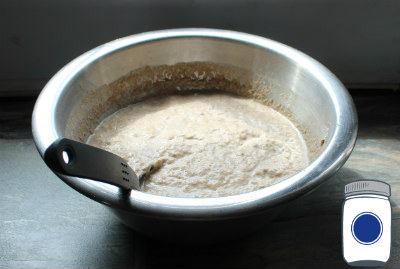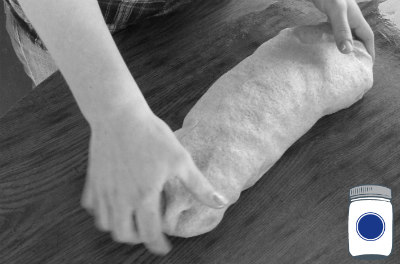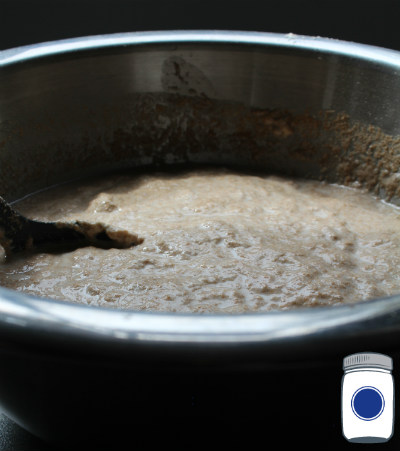Pre-ferments, the key to unlocking really great bread
Leveraging time, enzymes and yeast
“Fermentation is the key to world-class bread, assuming that the flour and other ingredients are good” (Reinhart, p. 11).

I used to not believe that quote above, but then again I used to think that flour only came in a paper bag. Which now that I think about it, should have tipped me off because the bag always leaked and why would an agricultural society (& one that cares about “if seal is broken”) put up with that? Sure, yeast will eat sugar. I have tasted beer and watched bread rise to know that is true. However, before I was married to a bread baker I was unaware that there is so much more than the mechanical pressure of carbon dioxide going on in the bread baking cycle. The difference between bread by the academic definition and extraordinary bread is fermentation; and if you want to go up a notch from there—pre-ferments make the difference.
We will metaphorically follow the bread baker’s axiom that the best loaves are made by building dough in stages . . . Eighty percent of the quality of the finished bread will be determined during the primary fermentation stage (Stage Three) and the other twenty percent primarily will be determined during the baking, or oven stage (Stage Ten) (Reinhart, p. 48-49).
Reinhart goes on to identify twelve stages of baking bread, but that is for a different day. If you recall from our blogpost on the Classifications of Bread, the use of a pre-ferment (or not) is what makes the dough a straight or direct dough as opposed to an indirect or sponge dough. I still consider myself to be still catching on to this, but a real bread baker utilizes millennia of wisdom. Dough that is mixed directly can still use yeast as the fermenting agent, but will not have the benefit of unlocking all the sugars of the grain which make the bread truly delicious. That happens only with grain and yeast and time.
What does “pre-fermentation” mean?
A fermentation process allows time to capitalize on the bacteria naturally present in a food item to digest the difficult enzymes that our bodies might not like (things like phytic acid), releases gases, and gives all of the flavors present an atmosphere to mingle, smooze, and make connections. If you make bread using yeast instead of sourdough, you are taking a shortcut (and you know it—but hey—I’m not judging) to the end result of bread without allowing a true fermentation to take place.

A “pre-ferment” is when you do give the flour a fighting chance for flavor by the gift of time. You are hydrating the flour ahead of time. You can use any measure of the flour you will use in the end recipe and an equal part water, stir, and let it sit out at room temperature for a few hours or even overnight (we will get into the details of this in our next blog). It is called a “pre-ferment” instead of “ferment”, because you are not fermenting the entirety of your bread, you are not utilizing a sourdough starter (with the proper strains of bacteria to raise the bread) and you did it ahead of time from the actual act of “making bread”. In other words, you aren’t adding the rest of the ingredients yet, you aren’t getting flour in your hair, and you have not even invested enough time into this process to require a “bread baking music” selection. You are not adding the ingredients yet. Just flour, just water (and sometimes a smidgen of yeast). This can still be yeast bread and not a sourdough with a sourdough bread starter, but you will mimic many of the flavors and increase the health benefits of a pre-digested wheat kernel through that gift of time.
Is this just academic? When will I ever use this, anyway?
French or Italian breads can only be properly made with a pre-ferment because the ingredient list is so simple: Flour, Water, Yeast and Salt (in a 60-2-2 baking math formula). The difference between bland and awesome is “the quality of the wheat, coupled with the baker’s ability to draw out flavor through fermentation and baking technique” (Reinhart, p. 31). Since the wheat berry is such a compact form of energy, it is best to coax the maximum value out of it slowly over time; which as a corollary has everything to do with the gluten content.

Take this analogy of a gallon of gasoline. If poured into a metal pan and ignited on fire, it will not do much work at all—rather it will likely put out a lot of black smoke and prompt your neighbors to call the fire department. Take that same gallon of gasoline and meter it out slowly in a fuel efficient internal combustion engine and you can get twenty or thirty miles down the road on that same unit of energy. Wheat works the same way, in that it responds better to slow release of flavor.
The use of pre-ferments is a simple and inexpensive way to improve bread quality. Each preferment generates different aromas depending on its characteristics. Aromas and final bread flavors are influenced by the pre-ferments’ liquid or stiff consistency, fermentation temperature, salt including or exclusion and the use of commercial yeast or wild yeast (Rossada).
So have I left you hanging? In the next blog we pick this conversation right back up. We will discuss the different types of pre-ferments and the considerations to make when choosing one.
Wilson
Pro Deo et Patria
Works Cited:
Reinhart, P. (2002). The bread baker’s apprentice, mastering the art of extraordinary bread. (p. 27). Ten Speed Pr.
Rossada, D. (n.d.). Retrieved from http://www.bakerconnection.com/artisanbaker/article_04.htm
Photos by Pantry Paratus. Feel free to re-pin or share them, but maintain proper attribution and link. Thank you.
Proviso:
Nothing in this blog constitutes medical advice. You should consult your own physician before making any dietary changes. Statements in this blog may or may not be congruent with current USDA or FDA guidance.
